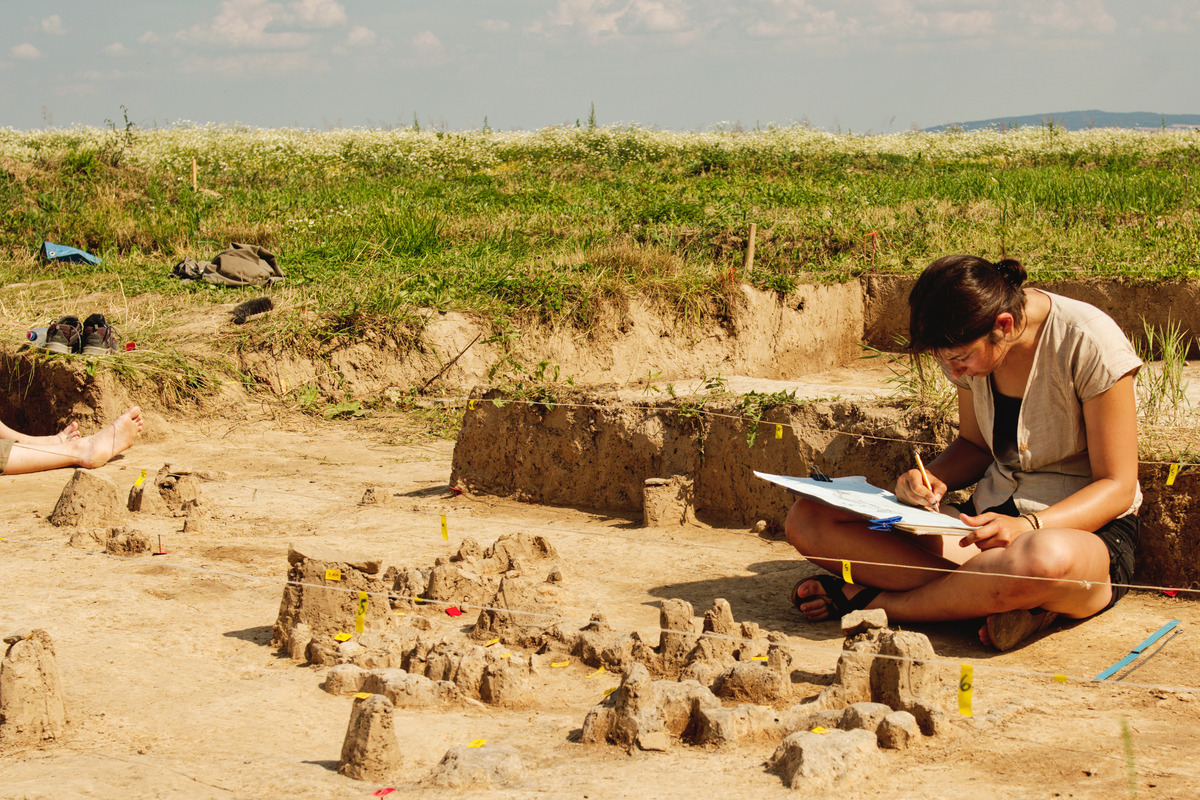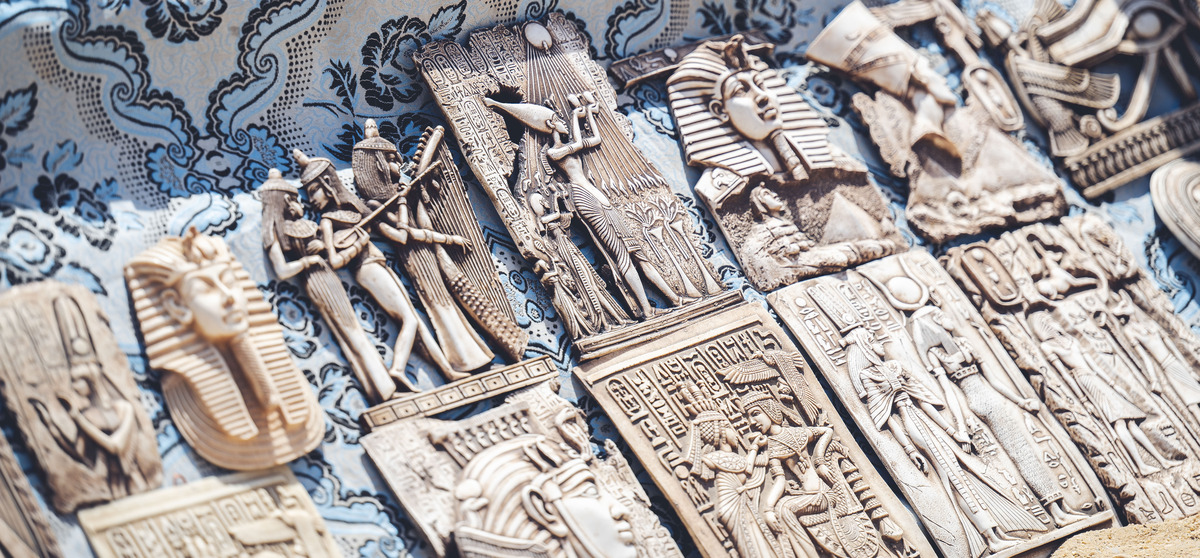How Is AI Being Used in Archaeology?
AI’s prowess doesn’t stop there. It’s also revolutionizing how we survey archaeological sites. Traditional methods often involve painstaking manual labor, but AI-enabled drones and satellite imagery can now scan landscapes with incredible precision. They detect subtle variations in vegetation or terrain that may indicate buried ruins or hidden artifacts, leading archaeologists to uncover new sites without extensive excavation.
Moreover, AI is enhancing the accuracy of dating artifacts. By analyzing the chemical composition or the style of craftsmanship, AI algorithms can provide more precise estimates of when an object was created or used. This helps archaeologists piece together timelines and understand cultural evolution with greater clarity.
Another frontier where AI shines is in the restoration and preservation of ancient artifacts. Whether it’s digitally reconstructing a shattered pottery or preserving delicate murals, AI’s ability to digitally restore and enhance artifacts ensures that future generations can appreciate our shared cultural heritage in its original splendor.
Beyond physical artifacts, AI is also transforming how we interpret ancient texts and languages. Natural language processing algorithms can now decipher ancient scripts and languages faster than ever before, unlocking narratives from civilizations long past. This capability opens new doors for researchers to study literature, governance, and societal norms from ancient cultures.
Unearthing the Past: AI’s Role in Revolutionizing Archaeological Discoveries
AI, the technological marvel of our age, is reshaping the field of archaeology in unprecedented ways. Traditionally, archaeologists meticulously sifted through soil, artifacts, and ancient texts to piece together the puzzle of civilizations past. While this method has yielded invaluable insights, it has often been slow and painstaking.
Enter AI, with its ability to process vast amounts of data at speeds incomprehensible to the human mind. By applying machine learning algorithms to archaeological data, researchers can now identify patterns, connections, and anomalies that might have eluded even the most seasoned experts. It’s like having a supercharged magnifying glass that not only reveals details invisible to the naked eye but also interprets their significance in real time.
One of the most thrilling applications of AI in archaeology is its role in predictive modeling. By analyzing existing data from archaeological sites around the world, AI can predict where new discoveries are likely to be found. This predictive capability not only saves time and resources but also opens up entirely new avenues of exploration in regions previously overlooked.
Moreover, AI is enhancing our ability to reconstruct and visualize ancient landscapes and structures. Through sophisticated algorithms, researchers can now digitally reconstruct ruins or artifacts, offering vivid representations of what these treasures might have looked like in their prime. It’s akin to reconstructing a shattered vase from its scattered fragments, allowing us to glimpse the beauty and craftsmanship of bygone eras.
In essence, AI isn’t just a tool for archaeologists; it’s a catalyst for discovery and understanding. By augmenting human capabilities with its computational prowess, AI is helping us unearth the past with unprecedented clarity and insight. As we continue to harness the power of AI in archaeology, one thing is certain: the future of discovery has never looked more promising.
From Pixels to Potsherds: AI’s Cutting-Edge Applications in Archaeological Imaging
Imagine uncovering the secrets of ancient civilizations not with pickaxes and brushes, but with the precision of artificial intelligence (AI). In recent years, AI has revolutionized archaeological imaging, offering researchers unprecedented insights into the past through advanced digital techniques.
One of the most awe-inspiring applications of AI in archaeology is its ability to enhance imaging of fragile artifacts like potsherds. These centuries-old fragments hold invaluable clues about ancient cultures, but their delicate nature often makes deciphering them a painstaking task. AI changes the game by analyzing high-resolution images pixel by pixel, revealing intricate details that escape the human eye. It’s like having a digital archaeologist that can spot patterns and anomalies amidst the dust of millennia.
But how does AI actually work its magic on these ancient relics? Think of it as a highly skilled restorer in a virtual museum. AI algorithms are trained on vast datasets of archaeological images, learning to recognize patterns of pottery styles, decorative motifs, and even subtle signs of wear. When presented with a new image of a potsherd, AI can quickly compare it to its database, identifying potential matches or linking it to known artifacts from distant excavations. This ability to cross-reference data not only accelerates research but also opens doors to new discoveries and connections between different archaeological sites around the world.
Moreover, AI doesn’t just stop at identifying and cataloging artifacts; it also aids in reconstructing fragmented pieces into cohesive wholes. Imagine putting together a jigsaw puzzle with missing pieces—the AI can predict how the missing parts might look based on similar examples it has analyzed. This predictive capability is a game-changer for archaeologists, allowing them to visualize complete vessels from mere fragments and gain a deeper understanding of ancient craftsmanship and culture.
Digging Deeper: AI Algorithms Decode Ancient Scripts and Languages
Imagine ancient tablets, covered in intricate symbols and glyphs, holding stories and wisdom from civilizations long gone. These scripts, once thought indecipherable, are now yielding their secrets thanks to AI. Through advanced machine learning techniques, computers are taught to recognize patterns in the script, much like recognizing faces in a crowd. Each stroke and curve is analyzed, compared, and matched against known languages and contexts.
Take the Rosetta Stone, for example. This ancient artifact unlocked the mystery of Egyptian hieroglyphs when it was discovered in 1799. Similarly, AI algorithms are modern-day Rosetta Stones, bridging the gap between past and present. They learn from vast databases of known languages and scripts, spotting similarities and differences that human eyes might miss.
But how does AI actually do it? It’s all about data crunching. These algorithms ingest huge amounts of linguistic data, from ancient manuscripts to modern translations, creating a web of connections between languages and scripts. They can then apply statistical models and neural networks to predict meanings and contexts, transforming what was once gibberish into coherent sentences.

As AI continues to evolve, so too will our understanding of ancient scripts and languages. The more data it processes, the sharper its insights become. Who knows what other mysteries of the past will be unraveled next? Perhaps AI will reveal lost languages or uncover forgotten histories, opening new chapters in our collective story.
In the end, AI isn’t just decoding ancient scripts; it’s rewriting how we perceive our own history and heritage. It’s a testament to human ingenuity and the power of technology to bridge the gaps between millennia, bringing us closer to the wisdom of our ancestors than ever before.
Preserving History: AI-Powered Tools for Digital Reconstruction of Ancient Sites
These tools utilize advanced algorithms to analyze vast amounts of data collected from archaeological excavations. By processing 3D scans, historical images, and even old texts, AI can reconstruct detailed digital models of ancient cities, temples, and artifacts. This process not only preserves these sites digitally but also enhances our understanding of their original splendor.
One of the most awe-inspiring aspects of AI-powered reconstruction is its ability to fill in the gaps where physical remains are scarce. Imagine a crumbling ruin, barely recognizable from its former glory. AI can extrapolate missing parts based on existing structures and historical context, recreating entire sections with remarkable accuracy. It’s akin to completing a jigsaw puzzle where some pieces have been lost to time, using AI as the master puzzle solver.
Moreover, these digital reconstructions are not just static images. They can be rendered into immersive virtual environments or even augmented reality experiences. Picture walking through the bustling streets of ancient Rome or standing before the towering pyramids of Egypt, all from the comfort of your home. AI brings history to life in a way that textbooks and documentaries simply cannot match.
Beyond preservation and entertainment, AI-powered tools also contribute to ongoing research and education. Archaeologists can study these digital models to hypothesize about ancient construction techniques, urban planning, and societal structures. Students and enthusiasts alike can engage with history on a deeper level, fostering a new generation of historians and archaeologists.
In essence, AI-powered tools for the digital reconstruction of ancient sites represent a leap forward in both technology and historical preservation. They blend the marvels of modern computing with the timeless allure of the past, offering us a profound connection to our human heritage. As these technologies continue to evolve, so too will our ability to unlock the mysteries of civilizations long gone.
Beyond Human Eyes: AI Mapping Techniques Redefine Archaeological Surveys
Imagine an AI system that can comb through vast landscapes, pinpointing potential sites of interest with unparalleled precision. It’s like having a digital archaeologist with a knack for finding hidden treasures buried beneath layers of time. These algorithms analyze satellite imagery, terrain data, and historical records in ways that human eyes simply can’t replicate. They sift through terabytes of information in seconds, revealing patterns and anomalies that might have eluded even the most seasoned experts.
One of the most astonishing aspects of AI mapping in archaeology is its ability to reconstruct ancient landscapes virtually. By processing data from LiDAR scans and ground-penetrating radar, AI can create 3D models of sites that have long been obscured by vegetation or natural erosion. This virtual reconstruction not only preserves delicate archaeological remains but also allows researchers to explore these sites from angles never before possible.
Moreover, AI doesn’t just stop at mapping and reconstructing. It can analyze artifacts and pottery fragments with remarkable accuracy, identifying patterns and connections that shed light on ancient trade routes, cultural exchanges, and societal structures. In a sense, AI acts as a bridge between the past and the present, helping us piece together fragments of history into cohesive narratives.
The implications of AI in archaeology extend beyond mere efficiency; they’re fundamentally changing the way we approach conservation and interpretation. By minimizing invasive excavation and maximizing data-driven insights, these technologies offer a more sustainable approach to preserving our global heritage.
Virtual Time Travel: How AI Simulations Reconstruct Ancient Civilizations
AI simulations are revolutionizing the way we understand and experience ancient civilizations. Imagine being able to explore these lost worlds from the comfort of your own home, guided by AI that reconstructs every detail with astonishing accuracy. From the architecture of ancient temples to the daily lives of people millennia ago, AI breathes life into history’s remnants.
One of the most awe-inspiring aspects of AI simulations is their ability to piece together fragments of archaeological finds into cohesive narratives. By analyzing artifacts, deciphering ancient texts, and leveraging machine learning algorithms, AI reconstructs entire cities and cultures that have long since vanished. It’s akin to solving a grand puzzle where each piece reveals a part of the larger picture.
Take, for instance, the city of Pompeii, frozen in time by the eruption of Mount Vesuvius in 79 AD. Through AI simulations, historians and archaeologists have reconstructed Pompeii’s streets, homes, and even the daily routines of its inhabitants. This digital resurrection allows us to witness moments frozen in time, offering insights into ancient Roman society that textbooks alone cannot convey.
Moreover, AI simulations enable researchers to test hypotheses about ancient civilizations. By creating virtual environments, historians can simulate how environmental factors, technological advancements, or social changes might have influenced historical events. It’s a powerful tool for exploring alternative histories and gaining a deeper understanding of the forces that shaped our world.

So, next time you find yourself marveling at the wonders of AI simulations, remember that what once seemed impossible—walking through the streets of ancient civilizations—is now just a click away. Let AI be your guide as you embark on a journey through time, where the past meets the future in the most astonishing of ways.
